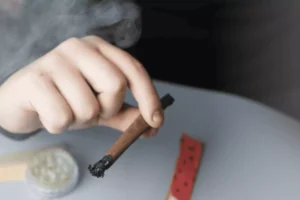
A Parent’s Guide to Marijuana and Marijuana Use
Marijuana continues to grow as a socially and legally accepted drug. Read our parent’s guide to marijuana to help in facing these situations.

What are the factors that influence kids to try drugs or avoid them?
Several factors can exert a significant influence on who will and who won’t try drugs:
Attractiveness of drugs. Smoking and drinking are widely promoted as habits enjoyed by sophisticated, fun-loving, attractive and sexy people — what most adolescents long to become. Illegal drugs are “advertised” by those using them in an adolescent’s peer group.
The high induced by drugs. If drug use wasn’t pleasurable, it would be relatively easy to keep kids and harmful substances separated. But the reality is that many kids enjoy the way they feel on drugs — at least for a while.
Attitudes of parents toward tobacco, alcohol and other substances. Children learn what they live. Smoking, drinking and other drug-related behaviors among parents will usually be duplicated in their children.
Availability of drugs. Finding drugs is not difficult for children and adolescents in most communities, but tougher local standards can help keep drugs out of less-determined hands.
Peer pressure. Peers play a huge role at each stage of a child’s or adolescent’s drug experience — whether resisting them, experimenting, becoming a user or confronting withdrawal and recovery. The need for peer acceptance is especially strong during the early adolescent years and can override (or at least seriously challenge) a young person’s values and commitments. “Just say no” may not mean a whole lot when smoking, drinking or taking drugs determines who is included among the highly esteemed ranks of the inner circle.
There are three obvious implications: First, it is important that kids find their niche in the right peer group(s), among friends who are not only committed to positive values (including a drug-free lifestyle) but also involved in worthwhile and enjoyable pursuits. Second, you may have to intervene if your adolescent (especially in the early teen years) is hanging out with the wrong crowd. Finally, children and adolescents with a healthy, stable identity and an appropriate sense of independence will be more resistant to peer pressure.
Curiosity. Unless your family lives in total isolation, your child will be aware of smoking, alcohol and drug use well before adolescence from discussions at school, watching TV and movies, or direct observation. Some curiosity is inevitable: What do these things feel like?
Thrill-seeking. This desire for excitement is in all of us to some degree and is what propels us toward certain activities: skydiving, roller coasters, movies (where sights and sounds are bigger than life), firework displays, sporting events and so on. Some of these are more risky than others, but none require chemical alteration of the senses to be satisfying.
Unfortunately, many children and adolescents seek drug experiences to produce thrills that normal life and consciousness can’t duplicate. Some observers have argued that this desire to alter consciousness is universal, wired into humans much like the desire for food, and that trying to prevent it is as futile as sweeping back the ocean with a broom. Assuming this is the case (which is certainly debatable) does not mean, however, that any and all forms of thrill-seeking should be given free rein. A number of other human instincts are no less universal, but hardly virtuous: pride, greed, hunger for power, the desire to dominate other people, lust, selfishness and so on.
Rebellion. Wayward children may engage in smoking, alcohol and drug use as a show of independence from family norms and values.
Escape from life/relief from pain. For many people — indeed, for most people in the world — life is just plain tough, and normal waking consciousness brings a constant stream of unpleasant sights, smells, sounds and sensations. The prospect of a chemical “timeout” may look very attractive. Furthermore, even when a person has plenty of creature comforts, the prevailing emotional weather can still be turbulent: kids and teens often feel anxious, angry, depressed, oppressed, stressed, bored, unfulfilled.
Whether one is down and out or rich and famous, drugs that bring about relaxation, stimulation or pure escape can be appealing. The strongest resistance to drug abuse therefore arises from an ongoing sense of joy and contentment that transcends circumstances. These attitudes are usually acquired, not inborn. Early positive experiences in the family and an active, wide-awake relationship with God play the most important roles in molding such attitudes.
A conviction that “it can’t happen to me” or that the consequences don’t matter. Many teenagers and young adults are prone to assume their own invulnerability or immortality, make shortsighted decisions, or shrug off the most fervent warnings about life’s pitfalls and perils with a smirk or the defiant pronouncement “I don’t care.” Shedding this perspective, learning to weigh consequences and adopting a long-range view of life are normal parts of maturing into adulthood. Unfortunately, some who become deeply involved in drug use remain stuck in an immature, self-destructive mind-set.